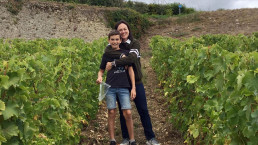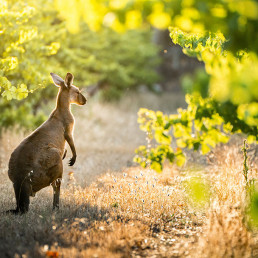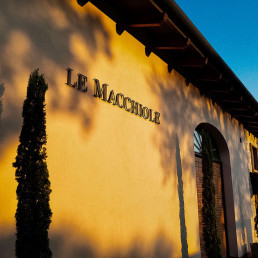Terre Brûlée from Tania & Vincent Carême
Say 'Howzit' to our new South African wines from Vincent Carême's Terre Brûlée
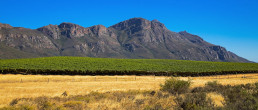
Terre Brûlée’s Tania and Vincent Carême are passionate about Chenin Blanc, point blanc[k]! Dare we say, Vincent’s the go-to guy for crafting exquisite, multi-faceted styles of the chameleon variety and has received acclaim from critics and wine lovers, the world over.
Domaine Vincent Carême lies in the heart of the famous Loire Valley’s Vouvray region, where he has become the winemaker with a proven pedigree for interpreting the gossamer complexities of Chenin Blanc.
Esteemed wine critic, Jancis Robinson MW is a longstanding fan of Carême’s Vouvrays which she enthusiastically portrays as “wines you want to dance across the room with.”
For some time though, Vincent was eyeing up potential vineyards much further afield than his beloved Vouvray – namely South Africa, which had long held a special place in his heart. Not only because Vincent’s wife and partner, Tania, is from the South African winelands, but he also worked four harvests there from 1997 to 2000 prior to founding his own winery in France, in 1999. Therefore, it was not entirely unexpected that he should try his hand at working with Chenin Blanc in another country also somewhat renown for producing excellent examples of this versatile grape variety.
“Minerals-and-sunlight wines – their entire range is a Chenin lover’s delight.”
Jancis Robinson MW
The South African passion project for Tania and Vincent became Terre Brûlée. Founded in 2013 in the Swartland wine region they have managed to source top quality fruit from 40 year old vines and rent winery space to make the Chenin “Le Blanc” and a red blend “Le Rouge” that Vincent had started thinking about during his time working in South Africa in the 90’s.
“We want to keep it simple. Let’s do what we love: make great wine, both here and in South Africa.”
Tania Carême
Vincent’s affinity to the region is evident in these wines that reflect unique elements which echo the distinctive South African terroir. This is a deliciously exciting confluence – between Old World knowledge and expertise with ancient but ostensibly New World terroir. We are thrilled to give our D&N customers and fellow imbibers, a chance to experience the truly top value wines of Terre Brûlée!
“The discovery of my spiritual home in South Africa dates back to my first harvest in the Swartland in 1997 [] Witnessing the tremendous potential of the region inspired me to return and produce a Chenin Blanc, using the same care and precision as my French wines.”
Vincent Carême, Winemaker
The Carême Story Unfolded a bit like this…
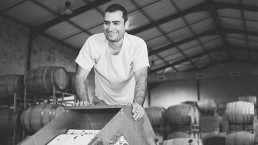
There’s not many of us who could say that at the age of 14 we knew what our “forever career” would be. Well, not so difficult for young Vincent Carême, who at only 14, living in the heart of Vouvray, yet not from a vigneron family, made his first bottle of wine guided by his incredibly proud grandfather. This marked the beginning of a lifelong passion for wine – and notably, for Chenin Blanc!
After receiving a formal and hands-on education in winemaking and viticulture at Lycée Viticole d’Amboise, Vincent worked a number of harvests throughout well-known wine regions in France including Sancerre, Champagne, and Alsace.
In 1997, he travelled to South Africa to gain winemaking experience in the New World. Over the course of four harvests, he was not only able to work in a completely different growing region with his treasured Chenin Blanc, but he also found something else beloved in South Africa – his wife Tania. By 1999 the couple returned to Vincent’s homeland in the Loire Valley and started their own winery with five hectares. Their certified organic winery now spans 42 acres in Vouvray, Vernou-sur-Brenne and Noizay.
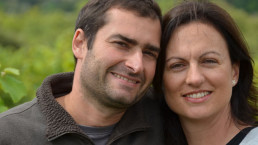
From a simple start this dynamic hardworking husband-and-wife team are now two of the Loire’s most respected winemakers and Vincent is also a mentor to many up-and-coming local producers. “He wants people to travel and experience winemaking in other parts of the world,” says Tania. “It means you come back to France full of new ideas and see the wonderful land here with fresh eyes and inspiration.”
Fun Fact – Chenin Blanc is believed to have arrived in South Africa in the mid-1800s. Today the country has double the acreage of Chenin Blanc planted compared to France and grows about two thirds of the world’s supply.
A Bit About Sassy Chenin…
Unquestionably one of the most diverse grape varieties, Chenin Blanc can do it all. Could we cheekily call it Chardonnay’s “brother from another mother”! Chenin shines in every style from bone dry to unctuously sweet, oaked, or unoaked, still or sparkling and even as the base for fortified wines and spirits. Perhaps Chenin Blanc’s greatest asset is its ever-present acidity, maintained even under warm growing conditions. We agree – what’s not to love about Chenin Blanc ☺
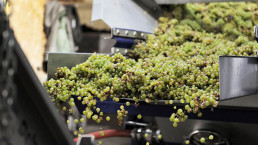
Chenin Blanc has a long and interesting history – Chenin hails from the Anjou region in France’s Loire Valley, and was thought to be growing there in the 9th century. It was formally classified Chenin Blanc in the 15th century, and the first vines reached South Africa in the middle of the 17th century. It isn’t exactly clear when Chenin arrived in the Cape though, but it acquired a local dialect name – steen – thanks to the early Dutch and German settlers’ mispronunciations. Originally many of the steen vineyards were used to make base wines for brandy production which became very popular and big business, especially in the first half of the 20th century.
It wasn’t until 1963 that Stellenbosch University viticulturist Professor Orffer finally proved that Steen was indeed Chenin Blanc. While very few serious examples of Chenin Blanc table wines existed at the time, the benefit of this long history of plantings and production is that many old bush vine vineyards existed, and it is these that have proven a treasure trove for today’s aspiring winemakers, like Vincent Carême.
The Terre Brûlée Region
South Africa is often lumped together, under some arbitrary umbrella heading, with the other wine-producing regions of the southern hemisphere – South America, Australia, New Zealand. This does an injustice both to the fantastic wines of South Africa and to the wine consumer: the region is unrivalled in its harmonious fusion of New and Old World winemaking styles.
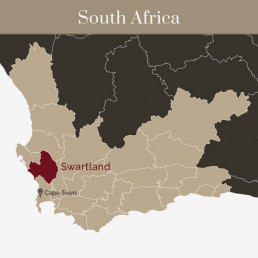
Terre Brûlée vines are grown in the Swartland wine region which is an area that is gaining acclaim, located about an hour north of Cape Town with pockets of vineyards spread throughout the foothills of the Piketberg, Porterville, Riebeek and Perdeberg mountains and along the banks of the Berg River.
“Swartland” translates to mean “the black land,” taking its name from the endangered, indigenous renosterbos (rhino bush) which once turned the land a dark “burnt” colour at certain times of the year. And suitably this was the inspiration for Tania and Vincent’s naming of their new winery – Terre Brûlée.
The Swartland wine region is renowned for its drought-resistant old vines and very special soils. The old bush vines and the soil type are what have allowed this region to produce wines of quality and intense fruit concentration. The soil of the Swartland is capable of retaining sufficient water to prevent the need for irrigation. The water sources, however, are located deep within the soil – forcing the vine roots to extend into the depths of the soil. So not only are these vines drought-resistant but they even tend to thrive in these conditions.
“[] you have to drink wines that you love, produced in the right way. That’s the bottom line for Vincent.”
Tania Carême
The Terre Brûlée Vineyards & The Carême Touch
Vincent firmly believes that the quality of wine is determined in the vineyard and consequently is meticulous about his vines. Carême’s southern Swartland vineyard is at 200 metres above sea level and made up of two main Chenin Blanc blocks around Jacklesfontein. They are dry farmed, unirrigated 40-year-old bush vines set on shale and decomposed granite.
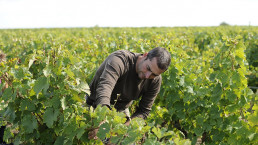
Contrary to the viticultural challenges in Vouvray such as mildew and fungal diseases due to the area’s damp and relatively humid environment, in South Africa, the main viticultural challenge recently has been dealing with a multiyear drought.
With the three previous years’ drought the 40+ year old vines have fared much better than younger ones during the drought because they have had years to establish root systems to access water located deep underground. Luckily there was more rain during the growing season in this vintage which allowed the drought-stricken soils to replenish moisture levels and the vines to be under less stress. Temperatures were moderate during harvest with no heat waves during the picking season allowing the grapes good acidity and more juice. It is a well-balanced vintage producing elegant wines of quality.
In the cellar, the Terre Brûlée wines, even though derived from this tough terroir, are made in similar sympathetic artisanal methods and definitely with the same care and precision as Vincent’s French wines: whole bunch pressing, only natural yeast for fermentation and an approach with minimal intervention in the cellar.
For the chenin, fermentation and ageing took place for 9 months on its fine lees in stainless steel tanks (40%) wooden tanks (40%) and 500-litre 2nd use French Oak barrels (5% new wood).
Between harvest in February and bottling in November the wine is tasted and regularly assessed thanks to Tania’s family and friends who carried samples to France (pre-Covid) when they visited from South Africa. Vincent visits South Africa at least twice a year. To ensure everything runs smoothly in Vouvray in his absence, Tania oversees all aspects of the winery while Vincent is away allowing him the freedom and attention necessary to foster this promising project.
[Terre Brûlée Le Rouge] “… may be one of the best buys in all of South Africa. Bravo!”
Robert Parker’s Wine Advocate
Although we have obsessively harped on about Chenin Blanc, we have also fallen head over-heels-in-love with Terre Brûlées’ Le Rouge which is a very focused and beguiling red blend of 40% Cinsault, and 60% Shiraz sourced from old dry-farmed vines. Obviously, Vincent is no slouch either when crafting a winning red wine! It comes across as mineral driven with a lively interplay between freshness and power.
The flavour profile, texture, and calibre of the Terre Brûlée wines present well above their pricing. We’re talking very wallet-friendly indeed! Grab your Terre Brûlée wine selection now to taste a slice of Franco-South African winemaking prowess.
The Terre Brûlée Wines
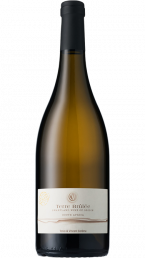
Terre Brûlée Le Blanc 2019
Tania et Vincent Carême
Variety: Chenin Blanc
Alcohol: 13%
Color: Pale lemon with peridot flecks
Aroma: Green apple, pear and honeysuckle
Palate: On the palate, high acidity and medium bodied. Pear and apples and goosberries with a light honey note.
92 points Bright, medium yellow with depth, a slight green hue, and even colour throughout. The nose is full, with underlying power, aromas of ripe stone fruit, melon interweave smoke, flint, and minerals. Full-bodied, aromas of melon, papaya and ripe stone fruit melded with smoky flint, clay minerals and spice. There is a savoury element that contributes to weight. An unctuous mouthfeel added volume. This is a weighty, powerful Chenin Blanc with ripe fruit, minerals and flint on a savoury, textural palate. Match with roasted turkey and pork over the next 3-5 years. Fruit from Swartland, 100% Chenin Blanc 13% alc, 3 g/l RS. Vegan friendly.
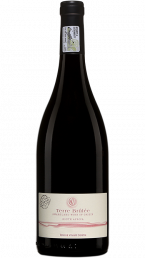
Terre Brûlée Le Rouge 2018
Tania et Vincent Carême
Variety: Cinsault/Syrah
Alcohol: 13.5%
Color: Black, intense.
Aroma: On the nose is plum and cherry that has earthy notes.
Palate: Smooth palate that has integrated tannins, long finish that is very pleasant.
90 pointsMade from a blend of 60% Shiraz and 40% Cinsault, the 2018 Le Rouge captures the essence and purity of each varietal. Aromas of black pepper, smoked herbs and roasted meats flutter with dusty dark fruit aromas from the Shiraz, whereas the high-toned and red-fruited nature of Cinsault adds notions of black raspberry, wild strawberry and cherry skin and a subtle hint of dusty, wild brush. Medium-bodied, the 13.5% alcohol wine shows true, displaying layers of red and black fruit mingling on the mid-palate with black spice and potpourri flavors. Showing a balanced structure with succulent tannins, the wine concludes with a slightly spicy finish, proving it’s an instant success and should drink well for the next 7-8 years.
92 pointsA blend of Syrah and Cinsault. Full-bodied and intense red with plum, dark berry and cherry, liquorice, dark chocolate and nutty oak flavours. Approachable now, but certainly worth cellaring.
The Terre Brûlée Wines

2019 Tania et Vincent Careme Terre Brûlée Le Blanc
92 points Bright, medium yellow with depth, a slight green hue, and even colour throughout. The nose is full, with underlying power, aromas of ripe stone fruit, melon interweave smoke, flint, and minerals. Full-bodied, aromas of melon, papaya and ripe stone fruit melded with smoky flint, clay minerals and spice. There is a savoury element that contributes to weight. An unctuous mouthfeel added volume. This is a weighty, powerful Chenin Blanc with ripe fruit, minerals and flint on a savoury, textural palate. Match with roasted turkey and pork over the next 3-5 years. Fruit from Swartland, 100% Chenin Blanc 13% alc, 3 g/l RS. Vegan friendly.
92 points – Candice Chow, Raymond Chan Wine Reviews

2019 Tania et Vincent Careme Terre Brûlée Le Rouge
90 pointsThe nose of the 2019 Le Rouge is delightfully floral with aromatically lifted notions of roses and dusty cherry blossoms, before high-toned red fruit expressions of red plum and cherry sway with elements of red peppercorn and potpourri. Medium-bodied, the 13% alcohol wine offers a precise palate with a balanced structure of lifting tannins and energetic acidity. Flavors of dusty black raspberry, dark cherry and plums continue their parade to a pleasurable conclusion that lingers with finesse and persistence. This may be one of the best buys in all of South Africa. Bravo!
90 points – Robert Parker’s Wine Advocate

Tania et Vincent Careme Terre Brûlée Le Rouge
92 pointsA blend of Syrah and Cinsault. Full-bodied and intense red with plum, dark berry and cherry, liquorice, dark chocolate, and nutty oak flavours. Approachable now but certainly worth cellaring. Drink 2022–2028
92 points – The Real Review, Bob Campbell MW

2020 Domaine Vincent Careme Vouvray Le Clos
94 pointsA very attractive Vouvray that offers a pleasurable contrast of ripe (apricot) and less ripe (green apple) flavours as well as a contrast between moderate sweetness and refreshing acidity. Great cellaring potential Drink 2022-2049
94 points – Bob Campbell MW, The Real Review
Other Accolades
90 points – Wine Spectator ‘Silver Lining’ Award 2020
90 points – Wine Spectator ‘Top 100 wines’ of 2019 List
90 points – Wine Spectator ‘Smart Buy’ 2019
A South African Recipe: Bunny Chow
You can’t have wonderful wine without some fabulous food
As a celebration of all things South African, we thought it would be fun to share a unique street food recipe from the region. Called Bunny Chow, it exemplifies the natural fusion of immigrant and South African cuisines. Made with aromatic spices, meat, chickpeas, and potatoes served in hollowed-out bread. A one-of-a-kind “sandwich-and-curry dip”. (Rest assured no bunnies were harmed in the making of this dish!)
Bunny Chow
- Large rectangular loaf of crusty white bread
- 500 g chicken thighs or breast cut into bite-sized pieces (or protein of choice)
- ½ cup canola or cooking oil
- 2-3 Curry leaves
- 1 teaspoon minced ginger
- 2 teaspoon minced garlic
- 1 tablespoon curry powder (or more to your taste)
- 1 medium onion diced
- 2 medium tomatoes diced
- 1 cinnamon stick
- 1½ teaspoon paprika
- 3 green cardamom pods lightly crushed
- 2 large potatoes cleaned and cut into cubes
- 1x 200g can chickpeas rinsed and drained
- ½ teaspoon cayenne pepper (optional)
- 1½ cup or more chicken broth or water
- Salt and pepper to taste
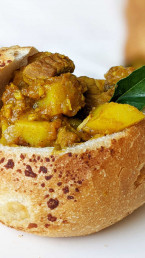
When ready to cook, heat up large saucepan with oil, and add onions, garlic, ginger, cinnamon stick, curry leaves, cardamom pods and curry powder, stir occasionally for about 2-3 minutes until onions is translucent.
Add tomatoes followed by chicken (meat/protein), stir and sauté for about 2-3 more minutes. Add chicken stock/ water if necessary to prevent sticking.
Next add chickpeas, potatoes, and chicken broth, about 1+ ½ cup, add more as needed. Bring to a boil and let it simmer until sauce thickens, it might take about 30 minutes or more.
Adjust for salt, pepper, and stew consistency.
How to assemble Bunny Chow
Use an unsliced rectangular loaf with the flat top, known in South Africa as a “Government sandwich loaf”. If you want to get “fancy” use round cob style bread.
Cut the bread across into two, three or four even chunks, depending on how hungry the eaters will be. Whatever you decide, with a sharp knife cut out most of the soft white bread, leaving a thick wall and bottom. Keep the bread you removed.
Ladle the curry into the hollows, and then put back on top the bread you removed. You could use this bread to help eat the curry.
How do you eat Bunny Chow?
The main rule of Bunny Chow etiquette is to use your hands! Eat the pieces cut out of the loaf first, dipping into the curry. Once this has been eaten, eat around the crust, dipping into the curry, and combining with a side dish of tangy fresh carrot salad and serve with your fave chutneys, relish, and extra fresh chillies.
